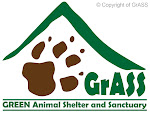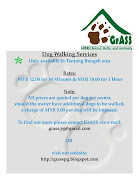Tuesday October 6, 2009
By SHARMILLA GANESAN
Healthier and eco-friendly ways to dry-clean clothes can be found here.
AS consumers become more savvy about the products and services they pay for, it is only natural that they also start becoming more discerning.
The story Dirt From Dry-cleaning (StarTwo, May 12) on the possible environmental and health impacts of dry-cleaning solvent perchloroethylene (perc) prompted questions on what alternatives Malaysian consumers have if they choose to avoid perc-based dry-cleaning.
The majority of local laundries still use perc, even though the highly volatile solvent has been identified as being harmful to health and the environment.
In fact, the state of California in the United States is phasing out the use of perc all together.
 Jeeves Malaysia CEO Jeffrey G. Walmsley says the Green Earth dry-cleaning machine uses the same process as traditional drycleaning, but eliminates the environmental and health concerns associated with the use of perc.
Jeeves Malaysia CEO Jeffrey G. Walmsley says the Green Earth dry-cleaning machine uses the same process as traditional drycleaning, but eliminates the environmental and health concerns associated with the use of perc. The use of perc can be safe if dry cleaners take the necessary precautions, like keeping machines in pristine condition so that minimal perc residue is left in clothing.
There is, however, no way to completely eliminate this. Operators should also store, transfer and dispose of perc responsibly in order to minimise its release into the environment.
There is, however, a sore lack of enforcing these practices in Malaysia.
While used perc is a scheduled waste that comes under the Department of Environment, laundries and dry cleaners fall under local authorities.
The usage of perc itself, however, does not seem to be monitored as such. Bigger laundry operators seem to self-regulate, while the smaller outfits simply do so on an ad hoc basis.
Green and clean
So what options do consumers have to clean "dry-clean only" clothes, while also protecting themselves and the environment? One lesser known but effective process is wet-cleaning. Admittedly, the idea of putting clothes labelled specifically for dry-cleaning through a wet process might turn off many customers. Wet-cleaning, however, is actually a viable alternative for most types of garments.
In wet-cleaning, computer-controlled washers and dryers are used to simulate the motion of a very gentle hand wash (to compare, a washing machine would rotate clothes a few dozen times a minute, while wet cleaning machines can spin as slowly as six times per minute). These machines can also be programmed for variables such as time, temperature, and mechanical action, allowing the wash to be tailored to the type of fabric. The cleaning agents used are simply detergents and softeners, similar to the ones we use at home.
The pre-washing process forms an important part of wet-cleaning. Here, spotting agents are used to remove stains from the garments. This removes the need for a strong wash. The clothes might then go through finishing (pressing or stretching) in order to retain the original shape and fit. Through these methods, wet-cleaning is able to tackle almost any type of clothing that should supposedly only be dry-cleaned, including leather, suede, woollens, silk and rayon.
Many people are not aware that wet-cleaning is actually available in Malaysia. Peggy Liew, whose company Kraft Trading brought in the Seitz wet-cleaning technology, shares that they have outfitted 124 laundries nationwide with the system.
"The chemicals used in the wet-cleaning process are completely biodegradable. Even our detergents are fruit acid-based," Liew says, adding that the used detergent can go down the drain. She further explains that unlike when handling perc, laundry workers don't need any protective gear while wet-cleaning.
She further claims that wet-cleaning is considered more hygienic in comparison to perc, which is distilled and reused. For garments used for prayers, for example, wet-cleaning might be preferable for this reason.
Zarina Ismail, who owns the Drop & Wash laundry chain, says wet-cleaning is the safest alternative to dry-cleaning, as it is a water-based cleaning process that does not generate hazardous waste nor pollute the surrounding environment. Utilising the Lagoon technology that incorporates washing, drying and finishing processes in one machine, Zarina currently operates five outlets in the Klang Valley and is offering their licensee package nationwide.
Providing options
For those who still prefer dry-cleaning, perhaps the alternative would be to use a perc-free service. Jeeves Malaysia does dry-cleaning using GreenEarth, an inert and non-toxic solvent made from silicone.
Chief executive officer Jeffrey G. Walmsley believes that while wet cleaning is effective, it is best to have more than one tool in the toolkit. He says certain garments may require proper dry-cleaning, such as those which aren't colourfast, those that might lose their shape or finish (such as sunray skirts with many pleats), and certain fabrics like chiffon that are prone to shrinking in water.
The GreenEarth dry-cleaning process is similar to that using perc, except that the solvent itself poses no discernable threat to either the environment or health. Made from pure liquid silicone, or as Walmsley describes it, "liquefied sand", GreenEarth breaks down into sand and trace amounts of water and carbon dioxide. Liquid silicone is also the base ingredient in many shampoos, conditioners and lotions, which makes GreenEarth safe to come in contact with the human body.
Consumers who think they may have to fork out exorbitant amounts for wet-cleaning are in for a surprise: it actually costs the same to wet-clean and dry-clean.
Walmsley, on the other hand, acknowledges that cleaning with GreenEarth is slightly more expensive. "The solvent is much more expensive than perc, and it is also more complicated to use, requiring more people and expertise. However, we believe that the benefits to our customers and their clothes are worth it. But the more consumers know about the cleaning processes, the better equipped they are to choose what's best for their clothes, their health and the environment," he says.
Liew agrees, saying consumers should ask more questions and be open to suggestions when dropping their clothes off for cleaning.
"Some operators say they are dry-cleaning when they are actually using wet-cleaning, simply because customers refuse to understand what wet-cleaning is. They assume that the only thing that will work is (perc-based) dry-cleaning, without realising how harmful it can be," she saysThis article was taken from: The Star Online: Lifestyle: Focus 6 October 2009











































No comments:
Post a Comment